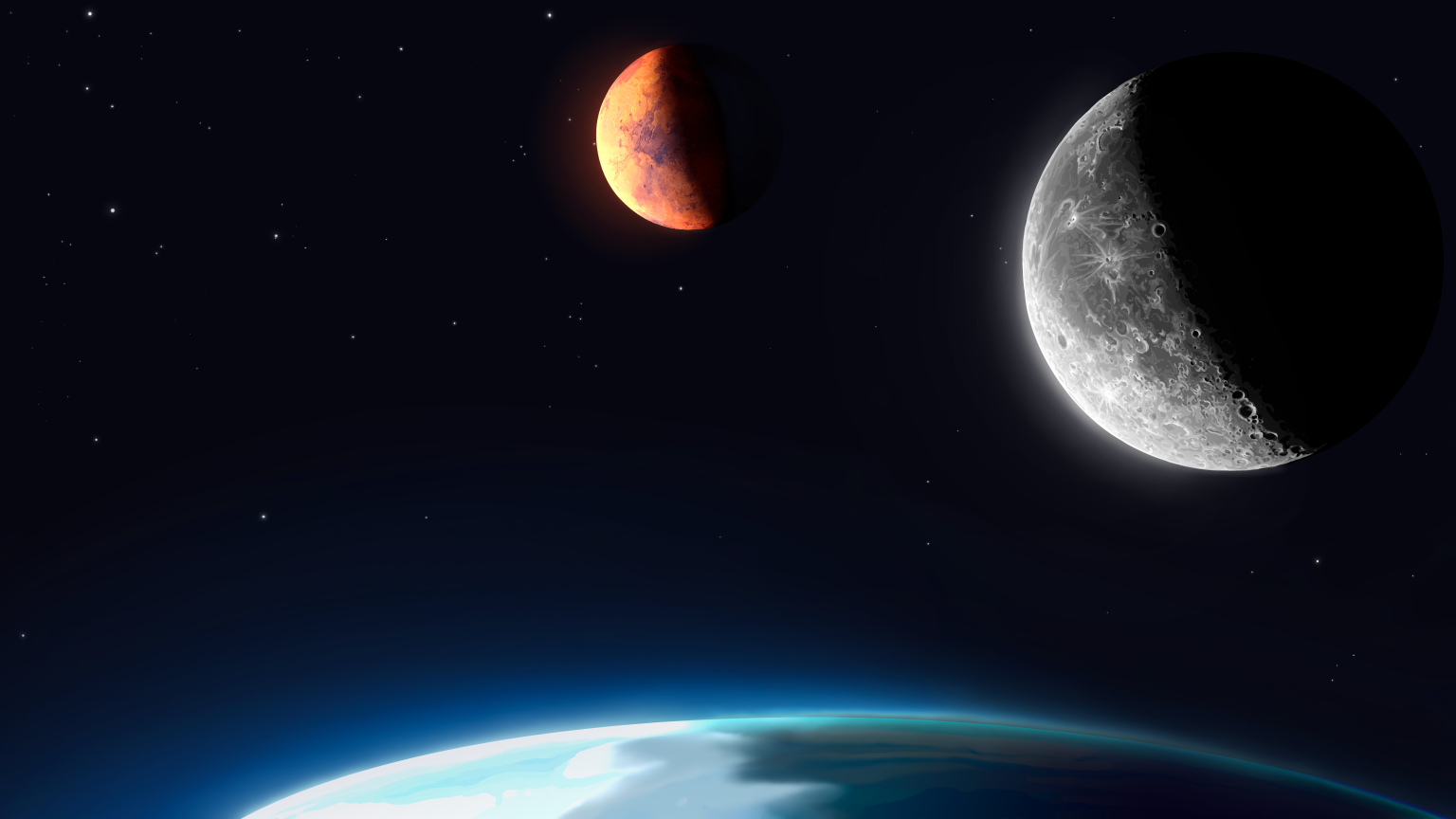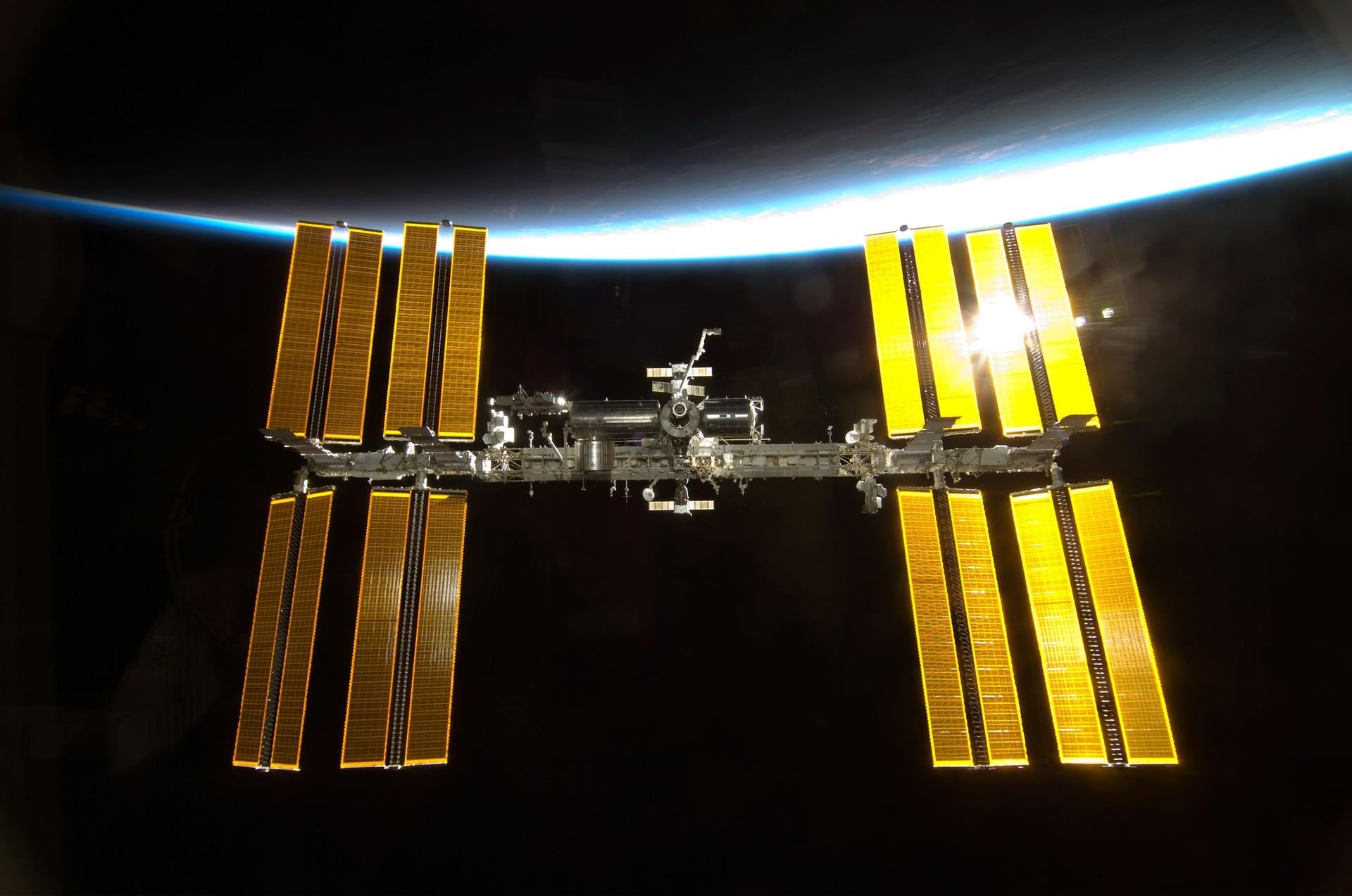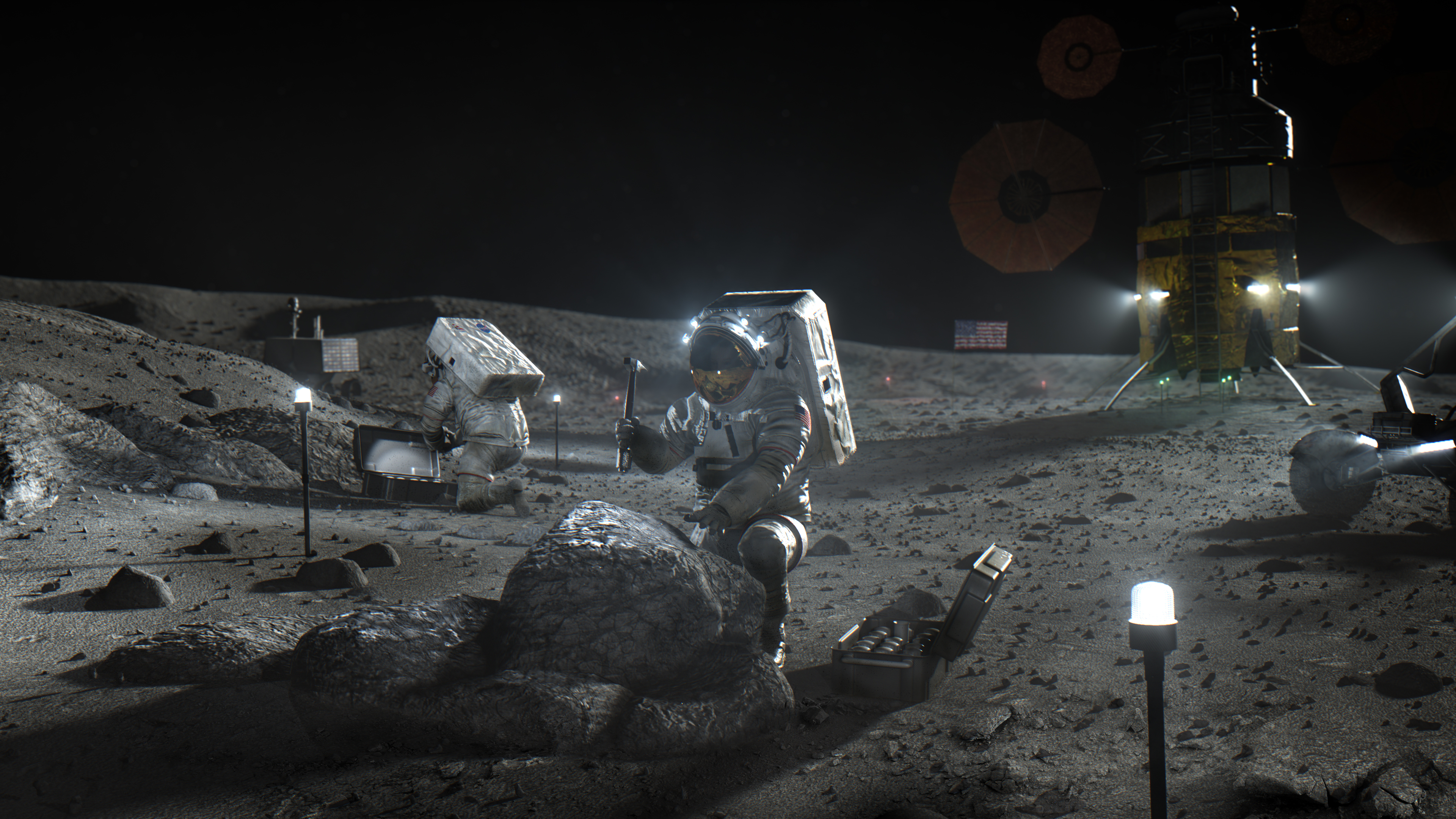Earlier today, the Committee on Appropriations released its recommendations for discretionary funding for fiscal year 2026(FY 2026). In addition to recommending significant cuts to international programs, education, health, and other departments, the Budget slashes funding to multiple NASA programs and initiatives. Overall, the Budget allocates $7 billion for lunar exploration and $1 billion for programs focused on Mars. However, NASA is also facing deep cuts and the cancellation of many programs that are part of its "Moon to Mars" and science objectives.
The Budget proposal states several times that NASA's priorities should be returning astronauts to the Moon ahead of China (which is planning on sending the first taikonauts to the lunar surface by 2030) and being the first space agency to send humans to Mars. At the same time, the Budget calls for the cancellation of the SLS, Orion, Gateway, and Mars Sample Return(MSR) missions. It also directs NASA to find more "cost-effective" measures, particularly commercial launch services and space stations.
The Budget calls for a total reduction of $6.34 billion compared to FY 2025, when NASA was allocated $25.4 billion. This makes NASA's Budget for the coming year about $18.8 billion, roughly equivalent to NASA's Budget for 1980 ($18.925 billion, adjusted for inflation).
Moon to Mars
As the top priority of the FY 2026, the proposed Budget recommends an additional $647 million for Human Space Exploration, specifically for "Mars-focused programs." This includes the sample-return mission, which will now be the responsibility of future crewed missions scheduled for the 2030s. This represents a reversal of the agency's previous decision to conduct a joint robotic sample-return involving an orbiter, lander, sample retrieval helicopters, and an ascent vehicle developed by NASA and the ESA.
 This was largely motivated by budget concerns and the lack of progress in many elements of the "Moon to Mars mission architecture. This included the proposed Deep Space Transport (DST) and the Mars Base Camp, which were deemed essential to NASA's long-term vision for sending crewed missions to Mars. Without a clear date on when astronauts would reach Mars, the MSR was seen as a cost-effective alternative that could be sent in the meantime. However, the mission has been in budget limbo for years and is (per the report) "grossly over budget" and "unaffordable.
This was largely motivated by budget concerns and the lack of progress in many elements of the "Moon to Mars mission architecture. This included the proposed Deep Space Transport (DST) and the Mars Base Camp, which were deemed essential to NASA's long-term vision for sending crewed missions to Mars. Without a clear date on when astronauts would reach Mars, the MSR was seen as a cost-effective alternative that could be sent in the meantime. However, the mission has been in budget limbo for years and is (per the report) "grossly over budget" and "unaffordable.
As for the Artemis Program, NASA is again facing a major restructuring of its proposed mission architecture and deep cuts. In short, NASA is facing a reduction of $879 million for Legacy Human Exploration Systems. Specifically, the proposed Budget includes a plan to phase out the Space Launch System (SLS) and Orion spacecraft after theArtemis IIImission is complete. As of 2016, NASA planned to use the SLS to deliver the elements of the Lunar Gateway to the Moon, which would be paired with a reusable lunar lander. Using theSLSandOrion, astronauts would be delivered to the Gateway by 2028 and begin conducting regular missions to the surface.
In 2019, Vice President Mike Pence announced that this timetable was to be expedited by four years. Henceforth, NASA was tasked with returning astronauts to the Moon no later than 2024. The Gateway was deprioritized as a result, and SpaceX was contracted to launch the station's core elements - the Power and Propulsion Element(PPE) and Habitation and Logistics Outpost(HALO) - using the Falcon Heavy. This mission was scheduled to take place in 2024 (now 2027), just a few months beforeArtemis IIIwas to take place.
Meanwhile, NASA was forced to investigate alternatives to the Gateway and reusable lunar lander. By 2020, the task of creating a Human Landing System(HLS) was (again) awarded to SpaceX for theirStarship HLS*. Nevertheless, theGateway*remained a key element of the Artemis Program and was scheduled for completion with the delivery of the International Habitation Module(I-Hab) in 2028 using the SLS. Afterward, NASA anticipated sending missions to the Moon at a rate of once a year. However, NASA now faces the cancellation of the SLS, Orion, and Gateway after 2027. Per the report:
"SLS alone costs $4 billion per launch and is 140 percent over budget. The Budget funds a program to replace SLS and Orion flights to the Moon with more cost-effective commercial systems that would support more ambitious subsequent lunar missions. The Budget also proposes to terminate the Gateway, a small lunar space station in development with international partners, which would have been used to support future SLS and Orion missions
Earth Science & Technology
As with the first Trump administration, deep cuts are being proposed for NASA's Earth Science programs. Specifically, the report identifies the Landsat Next mission as an example of "low-priority climate monitoring satellites." This mission was scheduled to launch by late 2030/early 2031 and would build on the successes of its predecessors by offering improved measurements and better temporal, spatial, and spectral resolutions. Instead, the agency is directed to restructure this "two-billion-dollar" mission and come up with "more affordable ways to maintain the continuity of Landsat imagery."
Another recommendation is to reduce the Budget of Space Technology programs by $531 million (approximately half). This section of the report addresses "failing space propulsion projects," which are not specifically named. However, this likely refers to NASA's research into nuclear propulsion, such as the Demonstration Rocket for Agile Cislunar Operations (DRACO). This nuclear-thermal propulsion concept is part of a joint NASA-DARPA operation, along with Lockheed Martin, to create a system that could dramatically reduce transit times to Mars.
Once more, the commercial sector is recommended as the alternative: "The reductions also scale back or eliminate technology projects that are not needed by NASA or are better suited to private sector research and development." Another $346 million will be cut from Aeronautics research, including eliminating research into "green aviation" and climate-focused approaches. However, the report's authors express a continued commitment to "protecting the development of technologies with air traffic control and defense applications, producing saving."
Other Cuts
Meanwhile, other areas designated as "lower priority research" will be cut, including Mission Support, Earth Science, STEM engagement, and theInternational Space Station(ISS). For Mission Support, a reduction of $1.134 billion is recommended, which would require NASA to "streamline the workforce, IT services, NASA Center operations, facility maintenance, and construction and environmental compliance activities." In short, NASA is expected to do more with less, emphasizing "efficiency."
The Budget also contains a $508 million reduction in funding for theInternational Space Station(ISS). With the ISS's retirement slated for 2030, budget reductions are to be expected. However, the stated purpose of the reduction "reflects the upcoming transition to a more cost-effective commercial approach to human activities in space as the space station approaches the end of its life cycle." The report reduces the ISS crew size, cuts funds to onboard research, and reduces the crew and cargo flights to the station.
 The report further states that the station's reduced research capacity will be "focused on efforts critical to the Moon and Mars exploration program." This is perhaps ironic considering that much of the research aboard the ISS is essential to sending crewed missions to Mars. This includes the physiological effects of microgravity, radiation exposure, growing plants in space, and additive manufacturing. It also emphasizes that the station will be replaced after 2030 by "commercial space stations."
The report further states that the station's reduced research capacity will be "focused on efforts critical to the Moon and Mars exploration program." This is perhaps ironic considering that much of the research aboard the ISS is essential to sending crewed missions to Mars. This includes the physiological effects of microgravity, radiation exposure, growing plants in space, and additive manufacturing. It also emphasizes that the station will be replaced after 2030 by "commercial space stations."
Finally, the Budget reduces funding for the Office of Science, Technology, Engineering, and Mathematics (STEM) programs by $143 million. The report is rather trenchant on this point, stating that "[S]imilar to prior generations that were inspired by the Apollo lunar landings, NASA will inspire the next generation of explorers through exciting, ambitious space missions, not throughsubsidizing woke STEM programming and research that prioritizes some groups of students over othersand have had minimal impact on the aerospace workforce."
Summary
A thorough reading of the Budget clarifies a few things. While it emphasizes the need for NASA to remain a leader in space and highlights the importance of its "Moon to Mars" objectives, it also proposes cuts that could considerably inhibit NASA's efforts. In virtually all respects, it targets funding for programs that prioritize Earth science, climate monitoring, and anything consistent with Diversity, Equity, and Inclusion (DEI) programs. It also emphasizes outsourcing mission elements and objectives to the commercial space sector.
This is unsurprising given the Trump administration's stated positions and policies. It's also consistent with the space policy enacted during his first presidential term, which emphasized commercialization and slashed funding for Earth Science and environmental programs. However, this latest Budget takes things further by recommending sweeping commercialization, eliminating the SLS, Orion, and the Lunar Gateway, significant cuts to the ISS research, and the Trump administration's well-known anti-DEI measures.
Despite the significant cuts and cancellations, NASA Administrator Janet Petro expressed thanks on behalf of the agency in a recent NASA press release:
This proposal includes investments to simultaneously pursue exploration of the Moon and Mars while still prioritizing critical science and technology research. I appreciate the President's continued support for NASA's mission and look forward to working closely with the administration and Congress to ensure we continue making progress toward achieving the impossible.
Credit:NASA,Whitehouse.gov
 Universe Today
Universe Today
